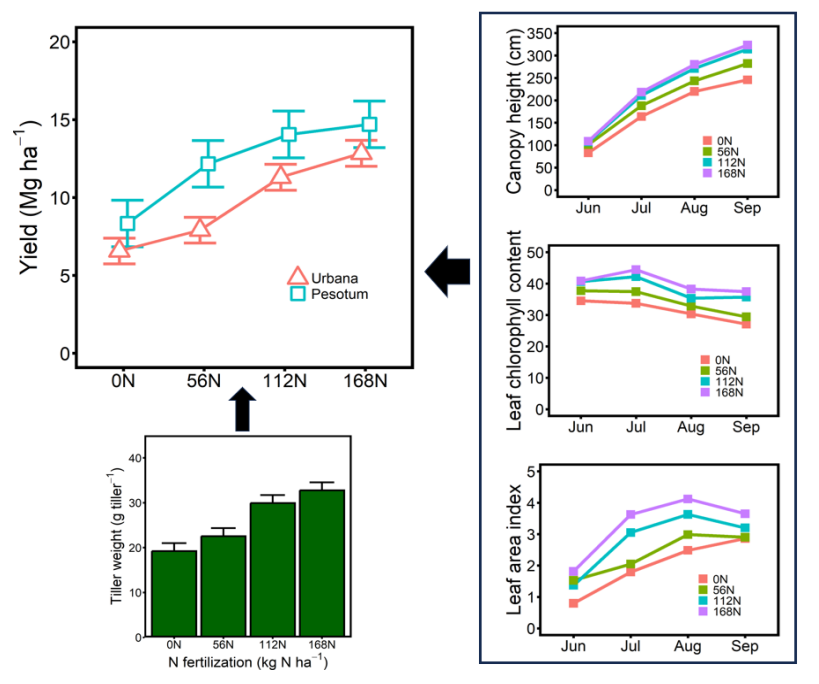Biomass Yield, Yield Components and Growing Season Phenotypic Measurements of Miscanthus
Themes: Sustainability
Keywords: Biomass Analytics, Field Data
Citation
Namoi, N., Jang, C., Lee, D.K. April 8, 2024. Data from: “Data from: ‘Biomass Yield, Yield Components and Growing Season Phenotypic Measurements of Miscanthus’.” Dryad. DOI: 10.5061/dryad.z612jm6kk.
Overview

For sustainable biomass production of Miscanthus × giganteus (hereafter miscanthus), understanding the impact of stand age and nitrogen (N) fertilization on biomass yield is crucial. This study investigated the effects of varying N fertilization rates (0, 56, 112, and 168 kg N ha-1) on yield components (tiller height, density, and weight) and their correlations with end-of-season biomass yield in miscanthus. We also explored end-of-season biomass yield prediction using in-season traits (canopy height, leaf area index (LAI), and leaf chlorophyll content (LCC)). The study was conducted at two sites in Illinois: a previously unfertilized 10-year-old miscanthus research stand at Urbana and a 16-year-old commercial stand at Pesotum with a history of annual 56N application. Results from 2018-2021 in Urbana and 2020-2021 in Pesotum showed increased biomass yields with N fertilization, varying by rate, year, and location. Biomass yield in Pesotum peaked at 56N, while in Urbana, it increased significantly at 112 kg N ha-1. Biomass yield was strongly correlated with tiller height and weight measured at Urbana across N rates. Morphological traits measured every 2-3 weeks during the 2020 and 2021 growing seasons showed that canopy height was the strongest single predictor of miscanthus biomass yield, followed by LCC. Mid-August to September measurements of these traits were the best predictors of biomass yield. Multiple regressions involving the canopy height and LCC further improved yield predictions. We conclude that while N enhances biomass yields of aging miscanthus, the optimum rate depends on the site, environmental conditions, and management.
Data
Dryad: Includes end-of-season dry biomass yields, yield component traits, phenotypic traits, and LAI/LCC data
Download (599 KB) includes:
- Miscanthus management information
- Supplemental information